
Philip III was King of Spain. As Philip II, he was also King of Portugal, Naples, Sicily and Sardinia and Duke of Milan from 1598 until his death in 1621.
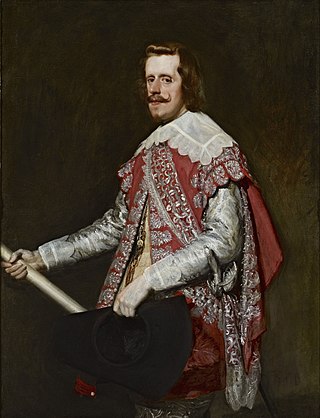
Philip IV, also called the Planet King, was King of Spain from 1621 to his death and King of Portugal from 1621 to 1640. Philip is remembered for his patronage of the arts, including such artists as Diego Velázquez, and his rule over Spain during the Thirty Years' War.

Fernando Álvarez de Toledo y Pimentel, 3rd Duke of Alba, known as the Grand Duke of Alba in Spain and Portugal and as the Iron Duke in the Netherlands, was a Spanish noble, general and diplomat. He was titled the 3rd Duke of Alba de Tormes, 4th Marquess of Coria, 3rd Count of Salvatierra de Tormes, 2nd Count of Piedrahita, 8th Lord of Valdecorneja, Grandee of Spain and a Knight of the Order of the Golden Fleece. His motto in Latin was Deo patrum nostrorum.

The Treaty of London, signed on 18 August O.S. 1604, concluded the nineteen-year Anglo-Spanish War. The treaty restored the status quo between the two nations. The negotiations probably took place at Somerset House in Westminster and are sometimes known as the Somerset House Conference.

Francisco Gómez de Sandoval y Rojas, 1st Duke of Lerma, 5th Marquess of Denia, 1st Count of Ampudia, was a favourite of Philip III of Spain, the first of the validos through whom the later Habsburg monarchs ruled. He was succeeded by the Count-Duke of Olivares.
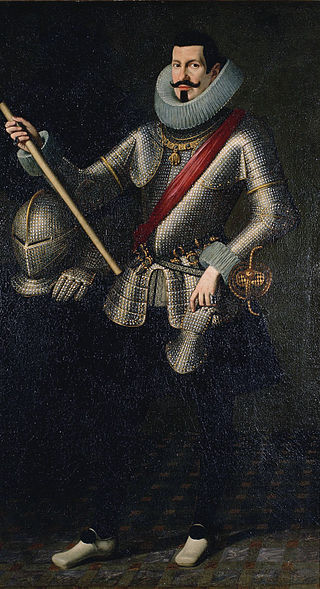
Pedro Téllez-Girón, 3rd Duke of Osuna was a Spanish nobleman and politician. He was the 2nd Marquis of Peñafiel, 7th Count of Ureña, Spanish Viceroy of Sicily (1611–1616), Viceroy of Naples (1616–1620), a Knight of the Order of the Golden Fleece since 1608, Grandee of Spain, member of the Spanish Supreme Council of War, and the subject of several poems by his friend, counselor and assistant, Francisco de Quevedo.

Francis Borgia was a Spanish Jesuit priest. The great-grandson of Pope Alexander VI, he was Duke of Gandía and a grandee of Spain. After the death of his wife, Borgia renounced his titles and became a priest in the Society of Jesus, later serving as its third superior general. He was canonized on 20 June 1670 by Pope Clement X.

Don Rodrigo Calderón, Conde de la Oliva de Plasencia, Marqués (Marquis) de Siete Iglesias was a favorite minister of the Duke of Lerma, while the latter was valido or valued minister of King Philip III of Spain. His dramatic fall from grace exemplifies the intricacies and instability of the ruling structures of 17th century Habsburg Spain.
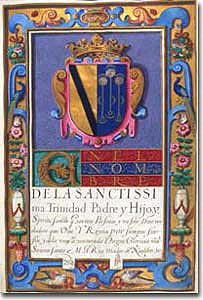
Cristóbal Gómez de Sandoval-Rojas y de la Cerda, known as the Duque de Uceda, but also titled second marquis of Cea, fifth marquis of Denia, and knight of the order of Santiago was the official minister of state, also known as the valido or valued one, for King Philip III of Spain. He engineered the exile of his father the Duke of Lerma, from the court, and his own succession to the position.

Duke of Uceda is a hereditary title in the Peerage of Spain, accompanied by the dignity of Grandee and granted in 1610 by Philip III to Cristóbal Gómez de Sandoval, who succeeded his father Francisco Gómez de Sandoval, 1st Duke of Lerma as the king's favourite.
The Flemish chapel was one of two choirs employed by Philip II of Spain, the other being the Spanish chapel.
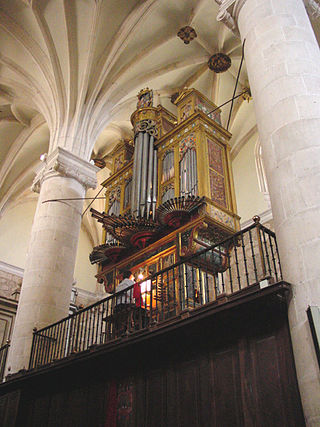
Gabriel Díaz Bessón was a Spanish composer.

Catalina Gómez de Sandoval y Mendoza (1616–1686) was the 8th Duchess of the Infantado, gaining the title after the death of her brother in 1657. She held the title until her own death in 1686. She also served in various important palace roles at the court of Charles II of Spain. She was also the Duchess Consort of Pastrana.
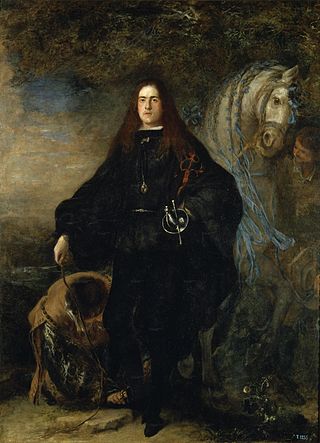
Gregorio de Silva y Mendoza was a Spanish noble from the House of Mendoza. He was the 5th Duke of Pastrana, 9th Duke of the Infantado, 7th Duke of Lerma, 6th Duke of Francavilla, 5th Duke of Estremera, and the Prince of Eboli and Melito.
Tiburzio Spannocchi (1541–1609) was "king's engineer" to Philip II of Spain and subsequently to Philip III of Spain. He was named "Chief Engineer" in 1601.

The Palacio de la Ribera was the summer residence of Philip III in Valladolid. It was built in the 17th century (1602-1605) as part of a process of urban transformation upon the establishment of the Spanish Court in Valladolid between 1601 and 1606. The palace was situated at the Huerta del Rey neighborhood, located across the Parque de las Moreras on the right bank of the Pisuerga river. The palace grounds extended from the Puente Mayor to Ribera de Don Periáñez del Corral and delimited at both sides by the Pisuerga river and the Camino del Monasterio del Prado. The palace was gradually abandoned until it became part of the destroyed cultural heritage of Valladolid in 1761. Some ruins of the building are still preserved.

Margarita of Spain was an infanta of Spain, who died in childhood.
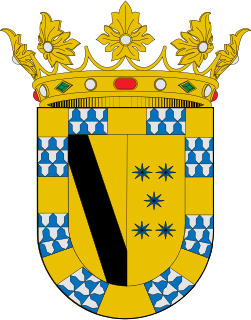
Duke of Lerma is a hereditary title in the Peerage of Spain accompanied by the dignity of Grandee, granted in 1599 by Philip III to Francisco Gómez de Sandoval, 4th Count of Lerma and his royal favourite.

Paradores de Turismo de España S.M.E.S.A., branded as Paradores, is a Spanish state-owned chain of luxury hotels that are usually located in historic buildings or in nature areas with a special appeal. Its very first parador was inaugurated on 9 October 1928 in Navarredonda de Gredos (Ávila). As of 2022, it operates ninety-seven paradors in Spain and one in Portugal, with 5,988 rooms in total. Every parador has its own restaurant offering the regional gastronomy of its area.

















